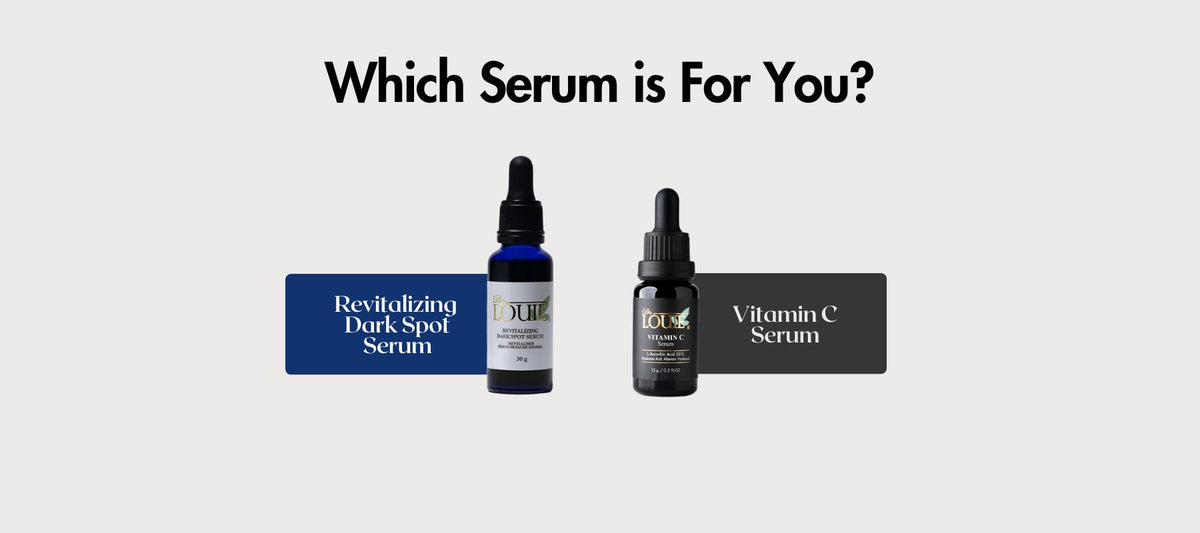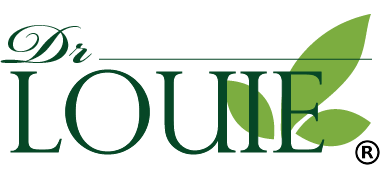
What Sets Them Apart: Dark Spot Serum vs. Vitamin C Serum
|
Time to read 3 min


|
Time to read 3 min
When building a skincare routine, it can be difficult to choose the right product for your skin's specific needs. And we've received so many questions about the differences between these two formulas that target hyperpigment and dull skin tone —Dark Spot Serum and Vitamin C Serum.
Each serves a distinct purpose, with unique ingredients, application methods, and target concerns.
Here’s how they differ, so you can choose the one that fits best.
| Feature | Dark Spot Serum | Vitamin C Serum |
| Primary Vitamin C type | Ascorbyle Glucoside (AA2G) | L-Ascorbic Acid (20%) |
| Primary Ingredient | Lactic Acid (10%) | L-Ascorbic Acid (20%) |
| Key Benefits |
|
|
| Use Case | Spot-correcting (topical) | Daily power boost of antioxidant and radiance (full-face) |
| When to use | Night time (topical) | Morning under All-in-One Essence or other moisturizer, and sunscreen |
This table shows an overall picture of the differences between Dark Spot Serum and Vitamin C Serum.
| Aqua (Water), Lactic Acid, Arginine, Glycerin, Ascorbyl Glucoside, Phyllanthus Emblica Fruit Extract, Caprylyl Glycol, Mannitol, Waltheria Indica Extract, Sodium Gluconate, Sodium Citrate, Allantoin, Aloe Leaf Juice, Dextrin, Citric Acid, Ferulic Acid |
| Lactic Acid, Ascorbyl Glucoside, Emblica™, Ferulic Acid, Allantoin |
| Aqua (Water), Ascorbic Acid, Glycerin, Panthenol, Allantoin, Hyaluronic Acid, Arginine, Caprylyl Glycol, Phyllanthus Emblica Fruit Extract, Aloe Barbadensis Leaf Juice |
| 20% L-ascorbic acid, Allantoin, Panthenol (Dexpanthenol), EmblicaTM |
Each product uses a distinct form of vitamin C, each with unique origins, mechanisms, strengths, and limitations:
Ascorbyl Glucoside (AA2G) — Found in Dark Spot Serum
Origin: A stable vitamin C derivative created by attaching glucose to ascorbic acid
Benefits: More stable than L-ascorbic acid, penetrates skin where it is enzymatically converted to active vitamin C. Gentler and well-suited for sensitive skin or localized use
Weaknesses: Slower to act; requires enzymatic activation so results are gradual
Clinical Support: Shown in peer-reviewed studies to reduce melanin and improve brightness over time without irritation ( Wang et al., 2022 )
L-Ascorbic Acid — Found in Vitamin C Serum
Origin: The pure, active form of vitamin C found naturally in fruits
Benefits: High antioxidant capacity, boosts collagen synthesis, provides fast brightening and environmental protection
Weaknesses: Unstable in light and air, may oxidize; best used quickly in low-pH, airtight packaging. Can cause tingling or irritation in sensitive skin
Clinical Support: Considered the gold standard in dermatology for skin lightening and anti-aging ( Pinnell et al., 2001 )
Emblica™ (Phyllanthus Emblica Extract) — Found at 1% in Vitamin C Serum)
Origin: Derived from Indian Gooseberry, a potent botanical source of natural polyphenols and vitamin C–like compounds
Benefits: Extremely stable, suitable for sensitive skin, provides long-lasting antioxidant protection, inhibits melanin formation without irritation
Weaknesses: Slower to produce visible brightening effects compared to L-ascorbic acid; often used as a supportive antioxidant
Clinical Support: Demonstrated to inhibit tyrosinase activity and reduce UV-induced pigmentation ( Al-Niaimi & Chiang, 2017 )
| Product | Application Routine | Frequency |
| Dark Spot Serum | Apply to affected areas (topicallyi) after cleansing and before moisturizing. Best at night | Every night |
| Vitamin C Serum | Apply on clean skin in the morning. Followed by All-in-One Essence or moisturizer and SPF. | Every morning |
| Skin Concern | Recommended Product | Why |
| Dark spots, severe hyperpigmentation | Dark Spot Serum | Combines gentle exfoliation and cell turnover (10% Lactic acid) with stable Vitamin C for targeted brightening |
| Overall dull skin tone, early signs of aging, less severe hyperpigmentation | Vitamin C Serum | Pure, potent form of vitamin C (20% L-ascorbic acid) to brighten, boost collagen production, and double boost of antioxidant protection |
Antioxidant Boost/Dull Skin:
If you need more antioxidant boost or feel that your skin is dehydrated, looking dull with visible signs of aging, then add Vitamin C Serum in the morning.
Hyperpigment Targeted Care
If your concerns are dark spots AND overall dull skin tone, add Dark Spot Serum at night for targeted concerns and Vitamin C Serum in the morning. Layered smartly, they work even better together.
And you can always start a live chat if you'd like a product recommendation. One of our friendly HUMAN representatives, who know our products and their workings inside out, can help you!



